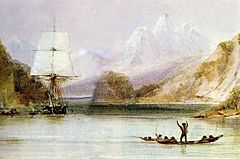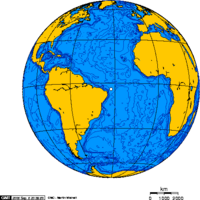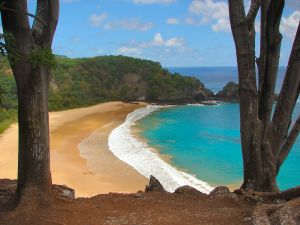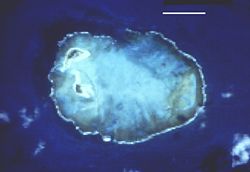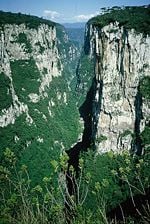Fernando de Noronha
| Brazilian Atlantic Islands: Fernando de Noronha and Atol das Rocas Reserves* | |
|---|---|
| UNESCO World Heritage Site | |
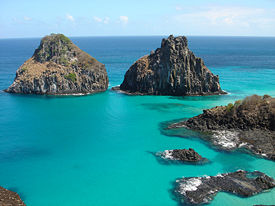
| |
| State Party | |
| Type | Natural |
| Criteria | vii, ix, x |
| Reference | 1000 |
| Region** | Latin America and the Caribbean |
| Inscription history | |
| Inscription | 2001 (25th Session) |
| * Name as inscribed on World Heritage List. ** Region as classified by UNESCO. | |
Fernando de Noronha is an archipelago in the Atlantic Ocean, part of the State of Pernambuco, around 354 km offshore from the Brazilian coast. Its area is 18.4 km², its population 2,051 (2000). The area is a special municipality (distrito estadual) of the Brazilian state of Pernambuco. Its timezone is UTC−2h. The position is .
Due to their remote location, the islands remain largely undisturbed by the human activities.
History
Controversies surround the archipelago's discovery by Europeans. From its original name, Ilha da Quaresma (Lent Island), it was sighted by expeditions in the years 1501, 1502 and 1503. The Viscount of Santarém, however, attributed the discovery to Gaspar de Lemos, captain of the supply ship of Pedro Álvares Cabral's fleet, sent back to Portugal with news of the discovery of Brazil. Modern historians, however, credit the 1501-1502 expedition led by Fernão de Noronha with the discovery of the archipelago.
The first to actually describe the island was Amerigo Vespucci, who traveled with a Portuguese expedition of Gonçalo Coelho to Brazil in the year 1503.
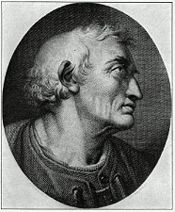
In 1534, the Fernando de Noronha Archipelago was invaded by the English, and from 1556 until 1612, it was held by the French. In 1628, it was occupied by the Dutch, who were displaced two years later by a Spanish-Portuguese military expedition led by Rui Calaza Borges. The Dutch occupied the island once again in 1635, making it a hospital for their troops who occupied Northeastern Brazil (the Brazilian coast between Rio São Francisco and Maranhão). The island became known as Pavonia, in honor of Michiel de Pauw, one of the directors of the Dutch West Indies Company. It would remain under Dutch control for nearly twenty years, when it was reconquered by Portugal.
Finding it uninhabited and completely abandoned in 1736, the French East Indies Company took the island and renamed it Isle Dauphine. Only from 1737 on, after the expulsion of the French, Fernando de Noronha was definitively occupied by Portugal. This time it was decided to fortify the island. For this purpose, ten forts were built in all strategic points where a possibility of disembarkation existed; nine in the main island and one in the Ilha de São José situated in front of the Saint Anthony harbor. The forts were connected by a network of stone roads. This defense system was planned by the Portuguese military engineer Diogo da Silveira Veloso.
In approximately 1770, the first permanent settlement on the island, Vila dos Remédios, was founded. The village was divided in two units (pátios); one which consisted of the administrative buildings, and the other which contained a the church and the associated religious buildings.
Charles Darwin’s historical five-year Beagle expedition in the 1830s included time spent on Fernando de Noronha. His observations resulted in subsequent visitations by other researchers.
When Brazil gained its independence in the late nineteenth century, little change occurred on Fernando de Noronha. At the beginning of the 20th century, the British arrived to provide technical cooperation in telegraphy (The South American Company). Later the French came with the French Cable and the Italians with Intalcable.
In 1942, during World War II, the archipelago was made a Federal Territory that also included Rocas Atoll and Saint Peter and Paul Rocks. During this time, political prisoners joined civilian detainees at the local prison, which was constructed in the late 18th century when the island began its service as a Portuguese penal colony.
From 1957-1962, the Brazilian government allowed the United States to use the island as a tracking station for guided missiles.
In 1988 approximately 70 percent of the archipelago was declared a maritime national park, with the goal of preserving the land and sea environment. On October 5, 1988, the Federal Territory was dissolved and added to the state of Pernambuco (except Rocas Atoll, which was added to the state of Rio Grande do Norte).
Fernando de Noronha's economy depends on tourism, restricted by the limitations of its delicate ecosystem. The archipelago has been the subject of the attention of various scientists dedicated to the study of its plant and animal life as well as its geology.
In 2001, UNESCO declared Fernando de Noronha, with Rocas Atoll, a World Heritage Site.
Geology
The islands of the Fernando de Noronha archipelago are the visible peaks of a range of submerged mountains. Consisting of 21 islands, islets and rocks of volcanic origin, the main island has an area of 18 square kilometers (7 sq mi), being 10 km (6.2 mi) long and 3.5 km (2 mi) at its maximum width.
The base of this enormous volcanic formation is 756 meters (2,480.3 feet) below the surface. The main island, from which the group gets its name, makes up 91 percent of the total area; the islands of Rata, Sela Gineta, Cabeluda and São Jose, together with the islets of Leão and Viúva make up the remainder.
The main island's western coastline contains cliffs with sandy beaches, extensive sand dunes occur in the east, Saco de Atalaia contains a tidal pool, and the southeast has a freshwater lake. Highly alkaline and subsatured volcanic and subvolcanic rocks are the primary make-up of the archipelago. The region's dry season runs from December through February, during which time many small springs and streams disappear.
Geography
During the 19th century much of the main island of Fernando de Noronha was cleared in order to prevent prisoners from building rafts. The islands are now predominantly covered by shrublands, with some areas of secondary forest. Many of the plants currently prevalent on the island are introduced.
Such fruit trees as papaya, banana, cashew, tamarind, and guava were introduced to the archipelago. Introduced decorative species include the almond tree, jasmine mango, royal poinciana, eucalyptus, as well as coconut palm and carnauba.
The United Nations Environment Programme lists 15 possible endemic plant species, two endemic birds and two 2 endemic reptiles. The main attraction is the maritime flora and fauna; one can spot sea tortoises, dolphins, albatrosses, among a variety of others.
Both the Fernando de Noronha Archipelago and Atol das Rocas support large populations of migratory and resident birds, Fernando Noronha being home to the largest bird breeding colonies of all the islands of the Tropical South Atlantic. Among the migratory species found within the island group are black noddy (Anous minutus), which builds its nest in trees and on cliffs of Fernando de Noronha using algae collected from the surface of the ocean; brown noddy (Anous stolidus); sooty tern (Sterna fuscata); fairy tern or white tern (Gygis alba), a pure white bird that lays its eggs in the forks of tree branches; red-footed booby (Sula sula); masked booby (Sula dactylatra); brown booby (Sula leucogaster); magnificent frigatebird (Fregata magnificans) and red-billed tropicbird (Phaethon aethereus) (both of which are noted for their extremely long tail feathers) (BAS 2001). Atol das Rocas shelters the largest breading colonies of Sula dactylatra and Anous stolidus in Brazil and of Sterna fuscata within the South Atlantic (Schulz Neto 1998). A few land birds are found inland on Fernando de Noronha, including the endemic Noronha vireo (Vireo gracilirostris), which is abundant in forests and trees (Johnson 1989). Other land birds are cocoruta (Elainia spectabilis) and eared dove (Zenaida auriculata).
The climate is tropical, with two well defined seasons: the rainy season from January to August, and the dry season for the rest of the year.
Fernando de Noronha is considered the best scuba diving place in Brazil.[citation needed] Warm water and exuberant subaquatic fauna and flora can be found in dives from 25 to 40 m deep. A Brazilian warship, the corvette NAeL Ipiranga, sank in 1987 and is lying in pristine condition at around 190 feet.
Conservation and environmental threats
Most of the original vegetation was cut down in the 19th century, when the island was used as a prison, to keep the prisoners from hiding and making rafts.
Also, invasive species have been introduced:
- Linseed, intended for use as cattle feed.
- Tegu lizards (Tupinambis merianae, locally known as teju) introduced in the 1950s to control a rat infestation. Ironically, that didn't work out, because Tegus are diurnal and rats, nocturnal. Now the lizards themselves are considered a plague, feeding mostly on bird eggs. [1]
- Rock Cavies (Kerodon rupestris, locally known as mocó) introduced by the military in the 1960s as hunting game for soldiers. [2]
Rocas Atoll
Rocas Atoll (Atol das Rocas) is an atoll in Brazil's Rio Grande do Norte state. It is located 145 km (90 mi) west of Fernando de Noronha, and approximately 232 km (144 mi) from the mainland. A wildlife sanctuary and biological reserve, it is uninhabited and used solely for scientific research. Along with the Fernando de Noronha archipelago, Rocas Atoll was designated a UNESCO World Heritage Site in 2001.
Of volcanic origin and coralline formation, the oval atoll is 3.7 km (2.3 miles) long and 2.5 km (1.6 miles) wide. The lagoon is up to 6 m (20 ft) deep and has an area of 7.1 km² (2.7 sq mi). The land area of the two islets (Cemitério Island, southwest and Farol Cay, northwest) is 0.36 km² (89 acres). Farol Cay accounts for almost two thirds of the aggregate area. The highest point is a sand dune in the south of larger Farol Cay, with a height of 6 m (20 ft). The atoll consists mainly of coral and red algae. The coral ring is nearly completely closed, with a 200 m (660 ft) wide channel on the north side and a much narrower channel on the west side.
Both islets are overgrown with grasses, bushes and a few palm trees. There are crabs, spiders, scorpions, sand fleas, beetles, large roaches, and many species of birds. Numerous turtles, sharks, and dolphins also make their home in the area.
There is a lighthouse of the Brazilian coast guard that has been in operation and maintained since the 1960s at the Northern end of Farol Cay. In its vicinity is a derelict lighthouse from 1933.
Resources
- Darwin, Charles, W. Botting Hemsley, Henry Nicholas Ridley, and Linn M. Smith. 1994. Charles Darwin visits Fernando Noronha: an illustrated narrative of one day during the voyage of H.M.S. "Beagle" with particular emphasis on the plants collected : based on his diary, journal, plant notes, and herbarium specimens. Northampton, Massachusetts: Old Leaf Press.
- de Almeida, C. E., V. Marchon-Silva, R. Ribeiro, A. Serpa-Filho, J. R. de Almeida, and J. Costa. 2000. "Entomological Fauna from Reserva Biologica do Atol das Rocas, Rn, Brazil: I. Morphospecies Composition". REVISTA BRASILEIRA DE BIOLOGIA. 60: 291-298.
- National Geographic Society. Fernanda de Noronha-Atol das Rocas moist forests (NT0123) Retrieved November 7, 2008.
- Pousada do Frances. Fernando de Noronha - Brazil Retrieved November 7, 2008.
- Secchin, Carlos, and Clóvis Barreira e Castro. 1987. Arquipélago de Fernando de Noronha. Rio de Janeiro, RJ, Brasil: Cor/Ação. ISBN 9788585058036
- World Wildlife Fund. 2001. Fernando de Noronha-Atol das Rocas moist forests (NT0123) Retrieved November 7, 2008.
External links
All Links Retrieved November 7, 2008.
- Audio interview with Fernando de Noronha resident about life on Fernando de Noronha
- Site about islands in Brazil
- A photo tour of the island
- Photos of Fernando de Noronha by Alex Uchoa
- Administration of Pernambuco
- Tourist site in Spanish
Atlantic Forest South-East Reserves · Brasília · Central Amazon Conservation Complex · Chapada dos Veadeiros and Emas · Diamantina · Discovery Coast Atlantic Forest Reserves · Fernando de Noronha and Atol das Rocas · Goiás · Iguaçu · Olinda · Ouro Preto · Pantanal Conservation Area · Salvador de Bahia · Sanctuary of Bom Jesus do Congonhas · São Luís · Serra da Capivara
Shared with Argentina:Ruins of São Miguel das Missões (Jesuit Missions of the Guaranis)
| |||||||||||||||||||
Coordinates:
Credits
New World Encyclopedia writers and editors rewrote and completed the Wikipedia article in accordance with New World Encyclopedia standards. This article abides by terms of the Creative Commons CC-by-sa 3.0 License (CC-by-sa), which may be used and disseminated with proper attribution. Credit is due under the terms of this license that can reference both the New World Encyclopedia contributors and the selfless volunteer contributors of the Wikimedia Foundation. To cite this article click here for a list of acceptable citing formats.The history of earlier contributions by wikipedians is accessible to researchers here:
The history of this article since it was imported to New World Encyclopedia:
Note: Some restrictions may apply to use of individual images which are separately licensed.
